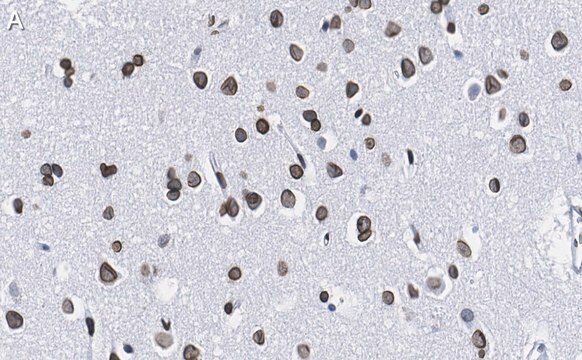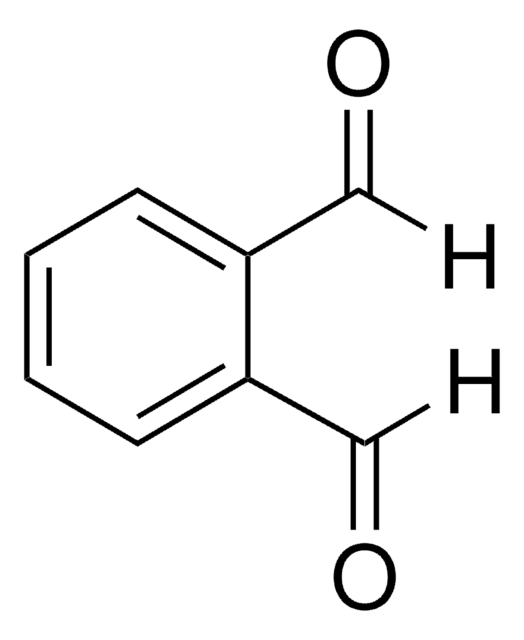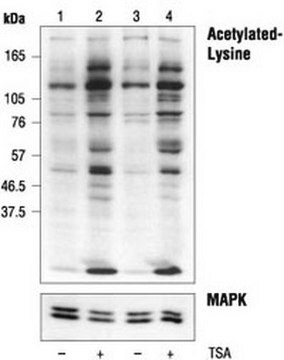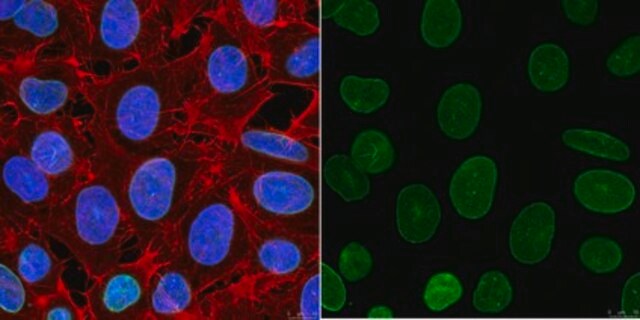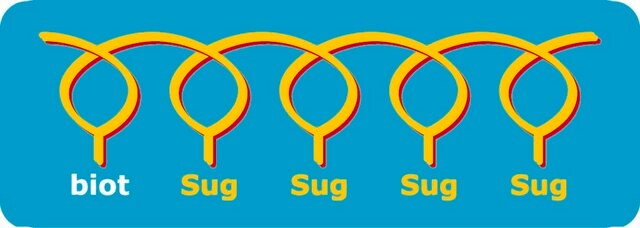05-714
Anti-Lamin A/C Antibody, clone 14
clone 14, Upstate®, from mouse
Sinónimos:
Anti-CDCD1, Anti-CDDC, Anti-CMD1A, Anti-CMT2B1, Anti-EMD2, Anti-FPL, Anti-FPLD, Anti-FPLD2, Anti-HGPS, Anti-IDC, Anti-LDP1, Anti-LFP, Anti-LGMD1B, Anti-LMN1, Anti-LMNC, Anti-LMNL1, Anti-MADA, Anti-PRO1
About This Item
Productos recomendados
biological source
mouse
Quality Level
antibody form
purified immunoglobulin
antibody product type
primary antibodies
clone
14, monoclonal
species reactivity
canine, chicken, human, rat, mouse
manufacturer/tradename
Upstate®
technique(s)
immunocytochemistry: suitable
western blot: suitable
isotype
IgG
NCBI accession no.
UniProt accession no.
shipped in
dry ice
target post-translational modification
unmodified
Gene Information
human ... LMNA(4000)
General description
Specificity
Immunogen
Application
This antibody has been reported by an independent laboratory to detect Lamin A/C in human endothelial cells.
Cell Structure
Cytoskeletal Signaling
Quality
Western Blot Analysis:
0.5-2 μg/mL of this antibody detected Lamin A/C in 20 μg of RIPA lysates from A431 cells.
Target description
Linkage
Physical form
Storage and Stability
Analysis Note
Positive Antigen Control: Catalog #12-301, non-stimulated A431 cell lysate. Add 2.5µL of 2-mercaptoethanol/100µL of lysate and boil for 5 minutes to reduce the preparation. Load 20µg of reduced lysate per lane for minigels.
Other Notes
Legal Information
Disclaimer
¿No encuentra el producto adecuado?
Pruebe nuestro Herramienta de selección de productos.
Optional
Storage Class
10 - Combustible liquids
wgk_germany
WGK 1
Certificados de análisis (COA)
Busque Certificados de análisis (COA) introduciendo el número de lote del producto. Los números de lote se encuentran en la etiqueta del producto después de las palabras «Lot» o «Batch»
¿Ya tiene este producto?
Encuentre la documentación para los productos que ha comprado recientemente en la Biblioteca de documentos.
Nuestro equipo de científicos tiene experiencia en todas las áreas de investigación: Ciencias de la vida, Ciencia de los materiales, Síntesis química, Cromatografía, Analítica y muchas otras.
Póngase en contacto con el Servicio técnico